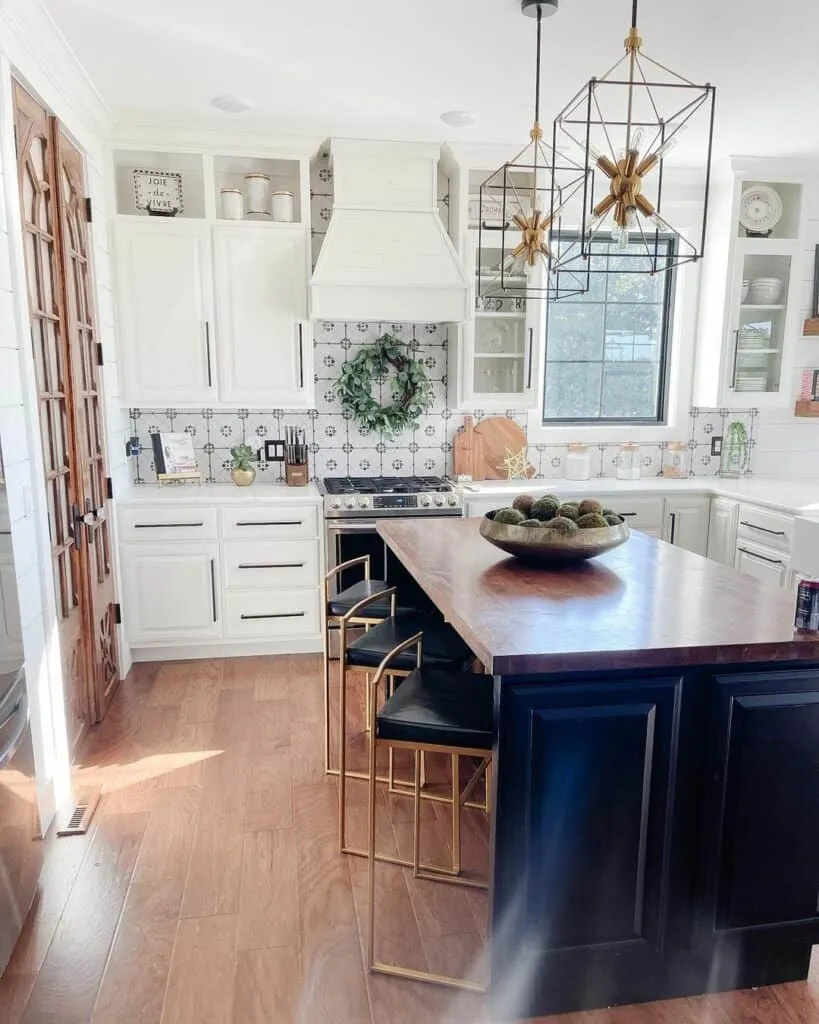Farmhouse Kitchen Decor Top 7 Ideas
Farmhouse kitchen decor is a timeless style that blends rustic charm with modern functionality. It’s characterized by a warm, inviting atmosphere, making it a favorite for homeowners who appreciate a cozy and comfortable space. This guide dives into the top 7 ideas to help you transform your kitchen into a beautiful farmhouse haven. Whether you’re starting from scratch or looking to update your existing space, these tips will guide you through creating the perfect farmhouse kitchen.
Embracing the Farmhouse Aesthetic
The core of farmhouse style lies in its simplicity, functionality, and natural elements. Think exposed wood, neutral color palettes, and vintage accents. It’s about creating a space that feels lived-in and welcoming, rather than overly polished. This style emphasizes practicality while embracing the imperfections that add character. The beauty of farmhouse decor is its versatility; you can easily adapt it to your taste by incorporating your favorite colors, materials, and personal touches.
Key Elements of Farmhouse Style
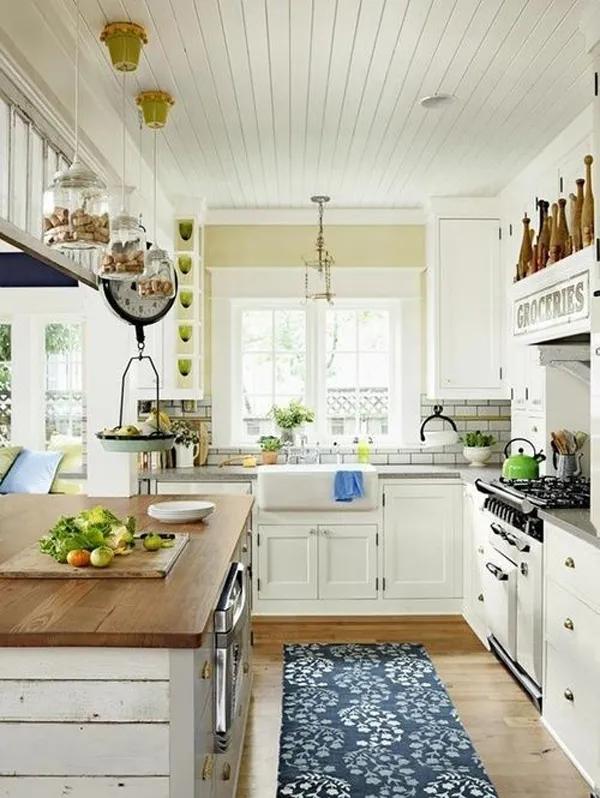
Several key elements define farmhouse design. Natural materials like wood, stone, and metal are crucial. Shiplap walls, exposed beams, and butcher block countertops are common features. Moreover, vintage or antique pieces add a touch of history and charm. Functionality is also a key, with open shelving, large farmhouse sinks, and practical storage solutions playing significant roles. The combination of these elements results in a space that’s both stylish and practical.
Color Palette and Textures
Farmhouse kitchens often feature a neutral color palette with whites, creams, grays, and soft pastels as the base. These colors create a sense of spaciousness and tranquility. Textures are equally important. Incorporate elements like woven baskets, linen textiles, and rough-hewn wood to add visual interest. Combining these textures creates a layered and inviting atmosphere that is characteristic of farmhouse design. Consider using contrasting textures to provide depth and sophistication.
Idea 1 Open Shelving
Open shelving is a hallmark of farmhouse kitchens, offering both functionality and visual appeal. It provides easy access to everyday items while showcasing your favorite dishes, cookbooks, and decorative pieces. Open shelving adds a touch of rustic charm and breaks up the monotony of closed cabinets. This design choice helps create a more open and airy feel, making your kitchen look larger and more inviting.
Maximizing Space and Style
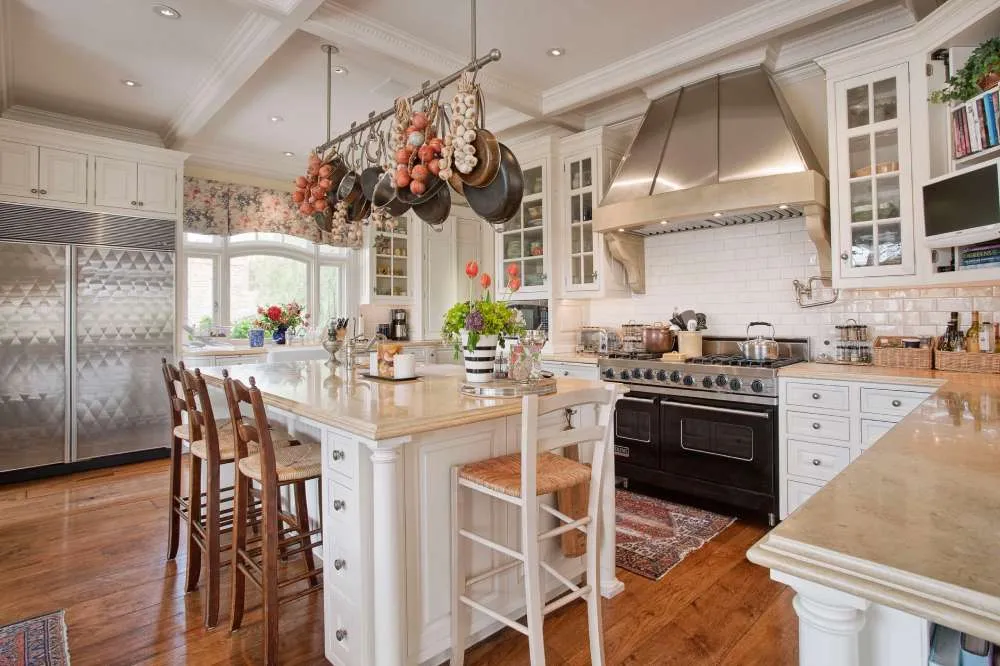
When incorporating open shelving, consider the layout and how it complements your kitchen’s design. Use the shelves to display frequently used items, and consider adding decorative elements to enhance the overall aesthetic. By strategically placing shelves and carefully selecting items, you can create a visually appealing and highly functional space. The key is to balance practicality with style, ensuring your shelves are both useful and beautiful.
Shelving Materials and Design
The materials you choose for your shelving can significantly impact the overall look. Wood is a classic choice, offering warmth and a rustic feel. Consider reclaimed wood for an authentic farmhouse touch. Metal brackets, often in black or iron, add an industrial edge. The design of the shelves should complement the rest of your kitchen. Whether you opt for floating shelves or bracketed ones, make sure they fit well with your space and storage needs.
Styling Your Shelves
Styling open shelves is an art. Start with a base of essential items like dishes and glassware. Then, add decorative elements such as vintage cookbooks, potted herbs, and small artwork. Vary the heights and depths of your items to create visual interest. Group items in odd numbers, which is often more pleasing to the eye. Don’t overcrowd the shelves; leave some empty space to maintain an airy feel. Change the styling seasonally or as your taste evolves.
Idea 2 Vintage Lighting
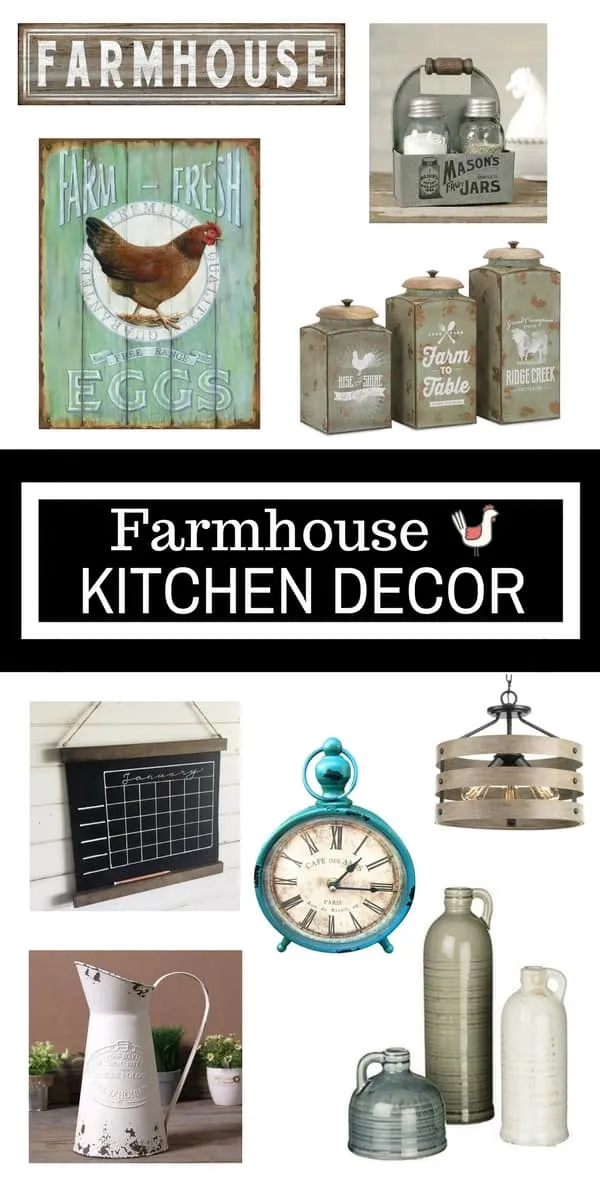
Vintage lighting fixtures are essential in a farmhouse kitchen, adding character and a touch of history. From pendant lights over an island to sconces by the sink, the right lighting can transform the atmosphere of your kitchen. Look for pieces with distressed finishes, unique designs, and classic shapes. Vintage lighting not only provides illumination but also serves as a statement piece, reflecting the aesthetic of the space.
Types of Vintage Lighting
Explore different types of vintage lighting to find the perfect fit for your kitchen. Pendant lights with metal shades or glass globes are a popular choice. Sconces with Edison bulbs add a warm glow. Chandeliers with rustic finishes or wrought iron details can create a focal point. Consider the scale of your kitchen and the placement of the lights. Mixing and matching different types can create a layered and visually appealing lighting scheme.
Placement and Impact
Proper placement of vintage lighting is key. Hang pendant lights over the kitchen island or dining table to provide task lighting. Install sconces near the sink or stove for added illumination. Use dimmer switches to control the ambiance. The right lighting can change the entire mood of your kitchen. Experiment with different combinations to find the perfect balance of functionality and style.
Finding Authentic Pieces
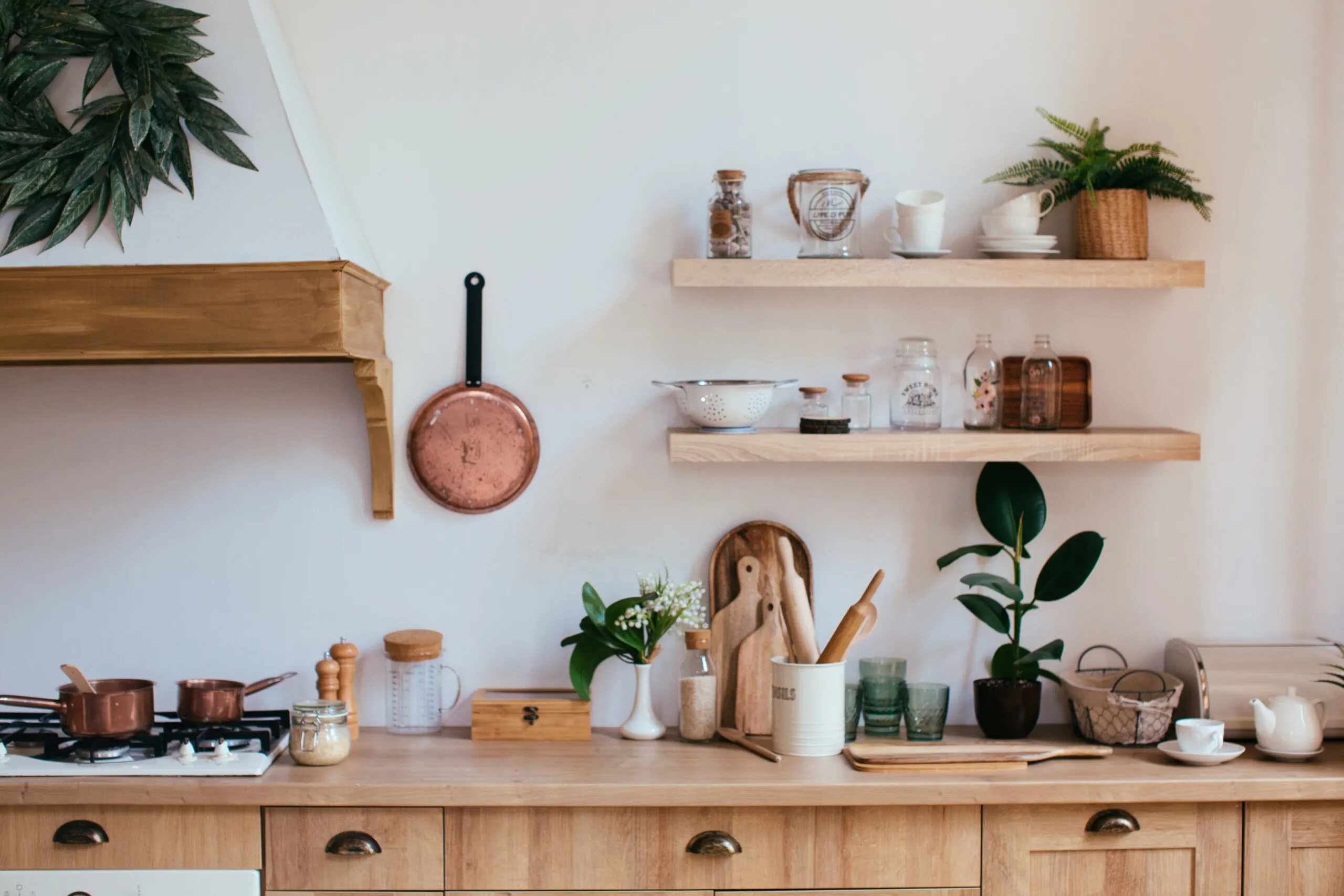
Finding authentic vintage lighting adds real character. Check antique stores, flea markets, and online marketplaces for unique finds. Consider the condition of the fixture and whether it needs any restoration. Make sure to have any wiring checked by a professional before installation. Don’t be afraid to mix and match different styles. With a little effort, you can find vintage lighting that perfectly complements your farmhouse kitchen.
Idea 3 Rustic Wood Elements
Rustic wood elements are at the heart of farmhouse design, bringing warmth and texture to the kitchen. From exposed beams to wooden countertops, wood adds a natural, inviting feel. These elements create a sense of connection to nature, enhancing the coziness of your kitchen space. Incorporating wood is a great way to add a sense of history and character.
Incorporating Wood
There are many ways to incorporate wood into your farmhouse kitchen. Consider a butcher block countertop for a functional and stylish surface. Add open shelving made from reclaimed wood. Use wooden accents on your cabinets or island. Incorporate a wooden dining table or chairs. The possibilities are vast, allowing you to customize your kitchen to suit your preferences. The goal is to create a balance that enhances the overall style.
Types of Wood and Finishes
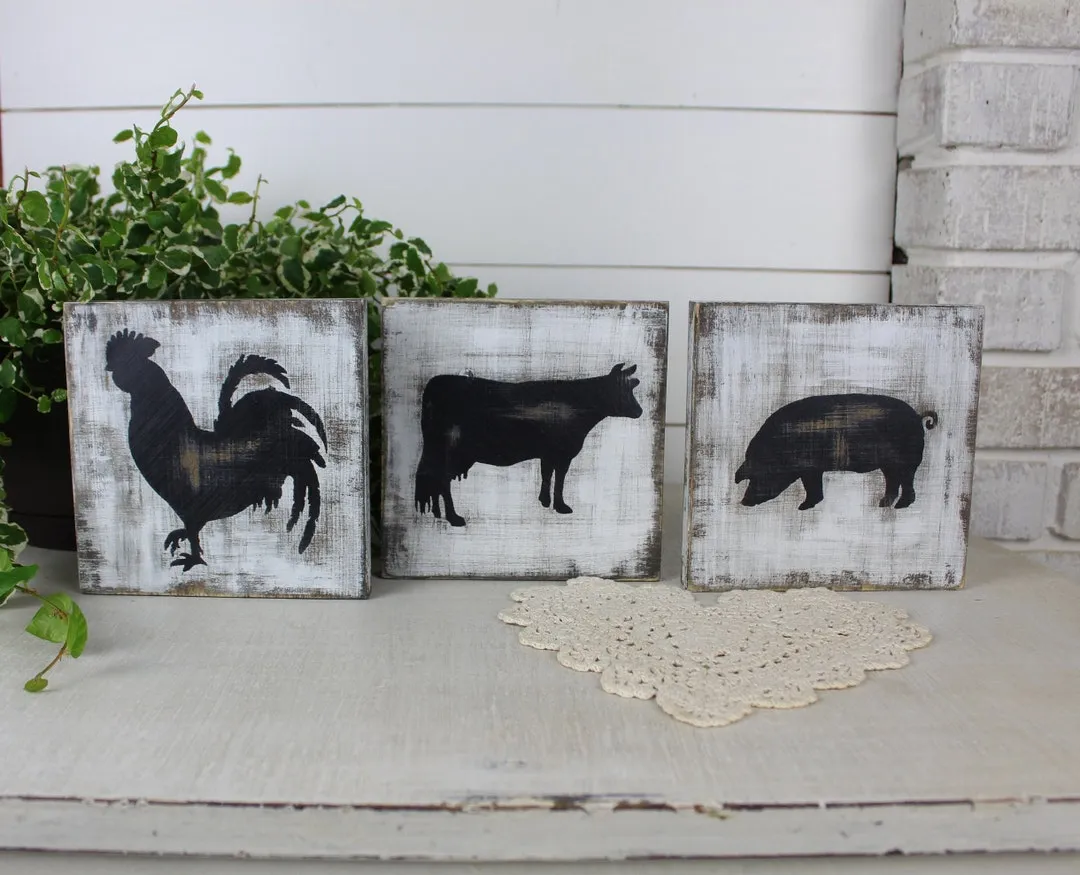
The type of wood and finish you choose can greatly affect the look. Reclaimed wood is ideal for its history and character. Pine and oak are classic choices, known for their durability and natural beauty. For finishes, consider a matte or satin stain to enhance the wood grain. Avoid glossy finishes, which can detract from the rustic aesthetic. Experiment with different finishes to find the perfect complement to your overall design.
Integrating Wood with Other Materials
Combine wood with other materials to create a layered look. Pair wood with white or neutral cabinets for contrast. Combine wood with metal accents, such as wrought iron or brass hardware. Use stone or brick elements to enhance the natural, rustic vibe. The key is to create a harmonious blend of textures and colors that reflect the farmhouse style.
Idea 4 Neutral Color Schemes
Neutral color schemes are the foundation of a farmhouse kitchen, creating a calming and inviting atmosphere. Whites, creams, grays, and beiges provide a clean backdrop that complements natural elements and vintage accents. These colors also create a sense of spaciousness, making your kitchen feel open and airy. The simplicity of a neutral palette allows you to add visual interest with textures and accent pieces.
Best Neutral Colors for Kitchens
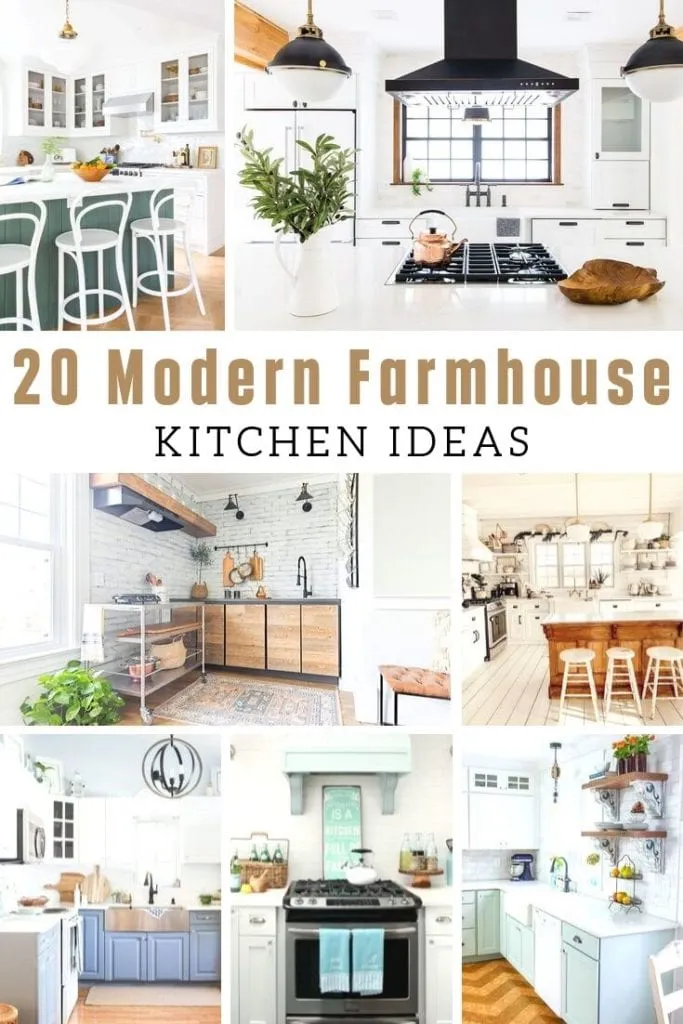
Choosing the right neutral colors is essential. Consider warm whites and creams to create a cozy atmosphere. Soft grays and beiges provide a more modern feel. When selecting colors, consider the natural light in your kitchen. Test paint samples in different areas of your kitchen to see how the colors appear. A well-chosen neutral palette sets the stage for a beautiful farmhouse kitchen.
Using Color to Create Warmth
While neutral colors are the base, you can create warmth by adding subtle variations and textures. Use different shades of the same color to add depth. Incorporate textured elements like shiplap walls, wood floors, and woven baskets. The goal is to avoid a sterile look. By layering textures and tones, you can achieve a space that is warm, inviting, and uniquely yours.
Accent Colors and Pops of Color
Don’t be afraid to add accent colors to break up the neutral palette. Soft pastels, such as blues, greens, and yellows, can add a touch of personality. Consider using accent colors in your accessories, such as dish towels, kitchen utensils, or artwork. Pops of color can bring your kitchen to life, adding visual interest. Keep the overall palette cohesive and use color sparingly to maintain the farmhouse aesthetic.
Idea 5 Farmhouse Kitchen Sinks
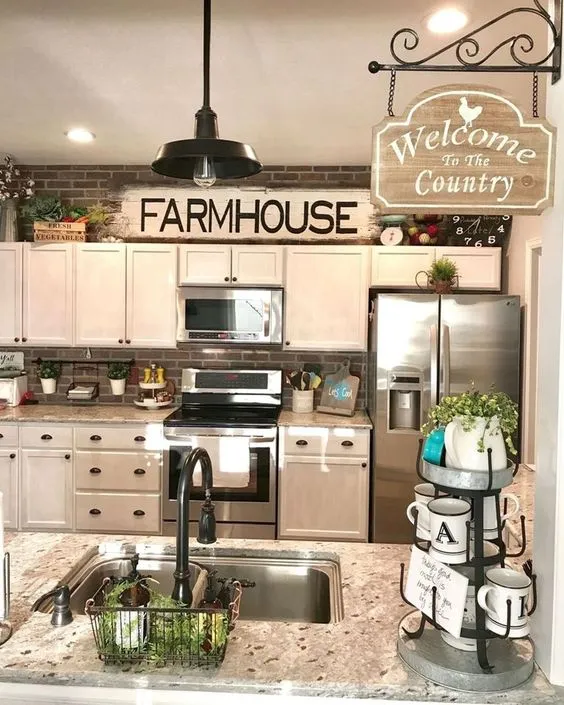
A farmhouse kitchen sink is a defining feature, providing both function and aesthetic appeal. These sinks, also known as apron-front sinks, are characterized by their exposed front panel. This design element adds a touch of elegance and practicality to the kitchen. The choice of sink can significantly elevate your kitchen’s overall style.
Choosing the Right Sink
When choosing a farmhouse sink, consider the size, material, and installation style. Measure your available space to ensure the sink fits properly. Materials such as fireclay, stainless steel, and cast iron are popular options. Each material offers unique benefits in terms of durability, maintenance, and appearance. Select a style that complements your kitchen’s overall design. Consider the depth of the sink, as deeper sinks can make washing larger items easier.
Apron-Front Sinks and Their Appeal
Apron-front sinks offer several advantages, including a distinctive visual appeal. The exposed front provides a charming, classic look. They also offer added comfort, as you can stand closer to the sink without the obstruction of a cabinet. The apron-front design also helps protect your cabinets from water damage. This type of sink adds a touch of luxury to the kitchen space.
Material Considerations
The material you choose for your farmhouse sink should complement your kitchen’s design. Fireclay sinks are known for their durability and classic look, stainless steel sinks are practical and easy to maintain, and cast iron sinks offer a vintage vibe. Consider your lifestyle and how often you use your kitchen. Each material provides a different set of advantages and disadvantages. The right choice will make a significant difference in the look and functionality of your kitchen.
Idea 6 Accessorizing with Farmhouse Decor
Accessorizing your kitchen with farmhouse decor is the key to bringing the whole look together. Choose decorative items that reflect the style, such as vintage signs, rustic pottery, and woven baskets. These accessories not only add visual interest but also create a personal touch. They can reflect your style and preferences. By thoughtfully choosing accessories, you can make your kitchen feel complete.
Choosing Decorative Items
Select decorative items that are in line with the farmhouse aesthetic. Consider vintage finds, such as enamelware pitchers, wooden cutting boards, and antique scales. Use natural materials like wood, metal, and woven fabrics. Incorporate a mix of textures and styles to create visual interest. Ensure that these items are functional and appealing to the eye.
Displaying Accessories
The way you display your accessories can transform the look of your kitchen. Use open shelving to showcase your favorite pieces. Arrange items in groups of varying heights and sizes. Place decorative items on countertops, windowsills, and tables. Maintain a balance between displaying items and keeping the space functional. This will create a visually interesting and practical kitchen.
Seasonal Decor and Updates
Change your decor seasonally to keep your kitchen fresh and inviting. Add festive touches during the holidays. Use seasonal colors and patterns in your textiles and accessories. Swap out items to create a new look. By making small changes, you can keep your kitchen feeling updated and interesting throughout the year.
Idea 7 Adding Textiles
Adding textiles is the finishing touch that enhances the coziness of a farmhouse kitchen. Textiles introduce texture, color, and pattern to the space. From dish towels and curtains to rugs and seat cushions, textiles add a warm and inviting feel. This layer adds softness and personality to your kitchen.
Incorporating Textiles
There are many ways to incorporate textiles into your kitchen. Use dish towels in complementary colors and patterns. Add curtains with simple designs. Place a rug in front of the sink or stove for comfort. Use seat cushions on your dining chairs. Mix and match different textiles for an interesting layered look. This variety will enhance the overall aesthetic.
Types of Textiles
The right textiles will enhance the feel of your farmhouse kitchen. Linen and cotton are popular choices because of their natural look and feel. Consider using patterned fabrics for dish towels and curtains. Choose rugs that are durable and easy to clean. Focus on fabrics that add texture and visual interest. Quality textiles enhance the beauty of your kitchen.
Textile Placement
Placement is essential for maximizing the impact of your textiles. Hang curtains that allow natural light to filter through. Place rugs in areas that experience high traffic. Use dish towels and pot holders that complement your color scheme. Mix and match different patterns and textures, but keep the overall style consistent. Proper placement ensures textiles will enhance your farmhouse kitchen.
In conclusion, creating a farmhouse kitchen is about combining rustic charm with modern practicality. By following these seven ideas — embracing open shelving, incorporating vintage lighting, adding rustic wood elements, using neutral color schemes, selecting a farmhouse sink, accessorizing with decorative items, and adding textiles—you can transform your kitchen into a warm, inviting space. Remember that the key to a successful farmhouse kitchen is to create a space that reflects your personal style. Enjoy the process of creating your dream kitchen!
